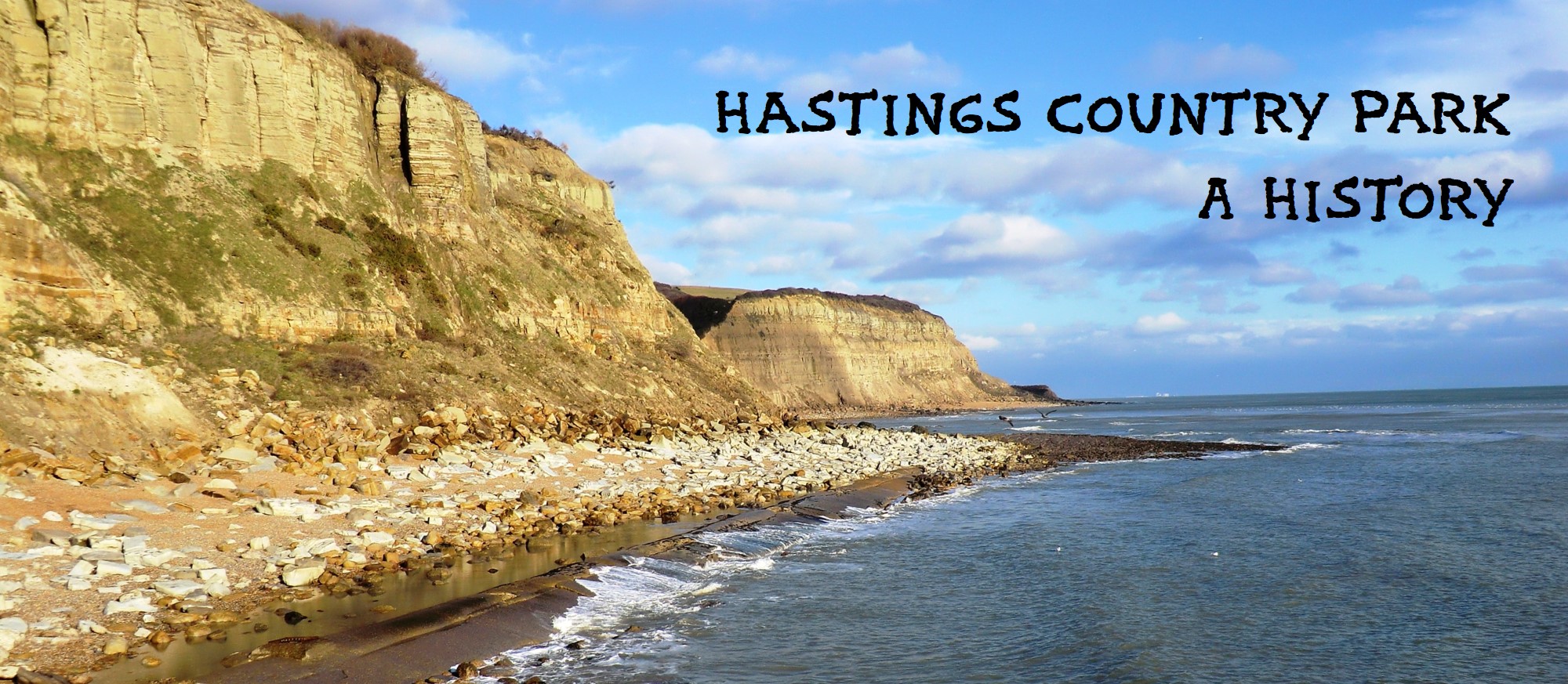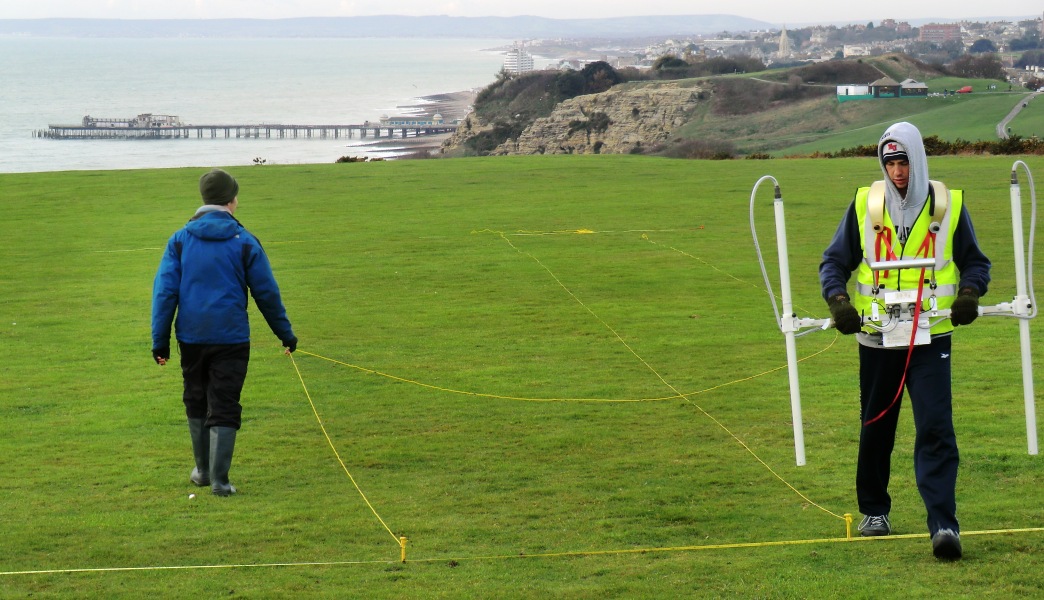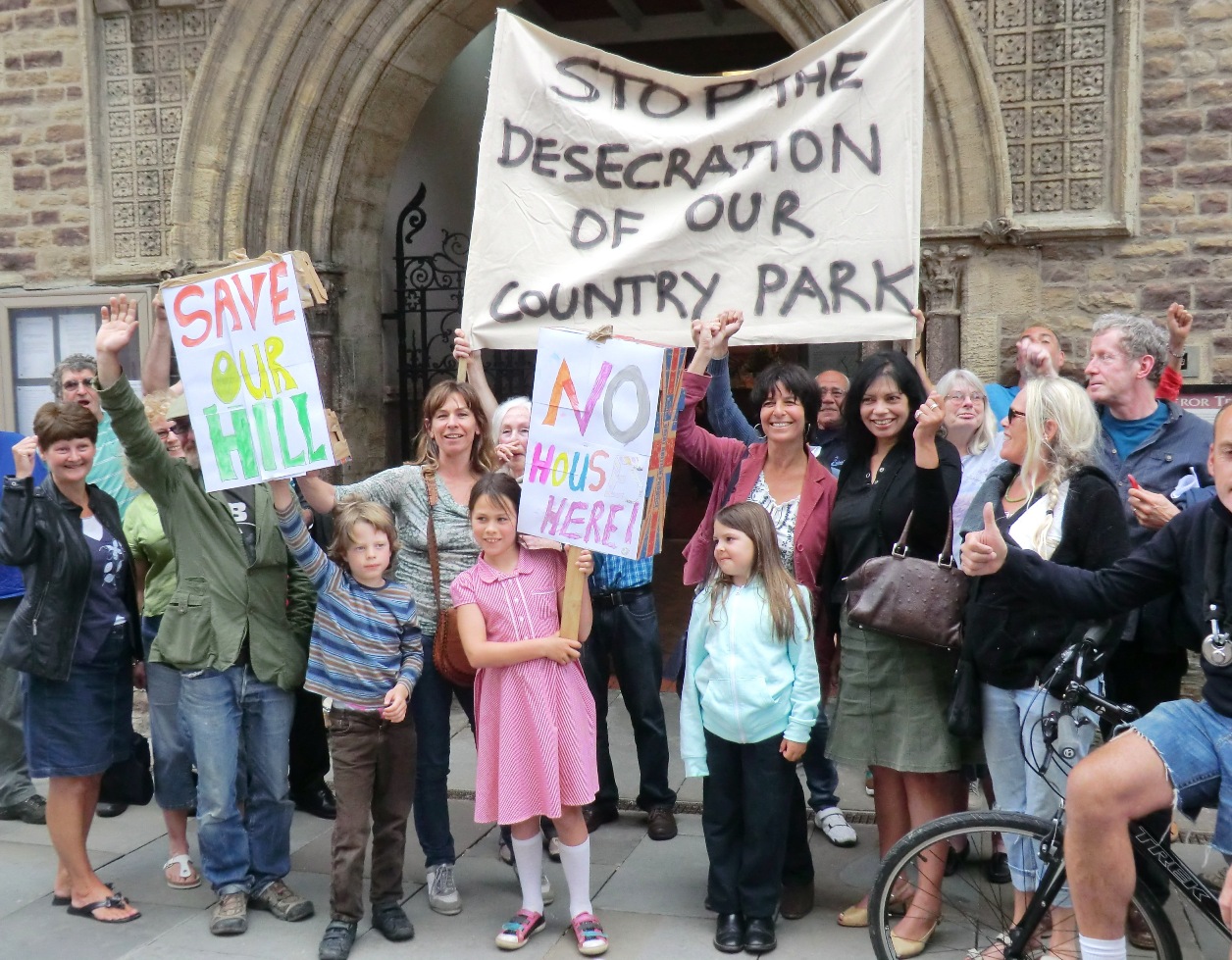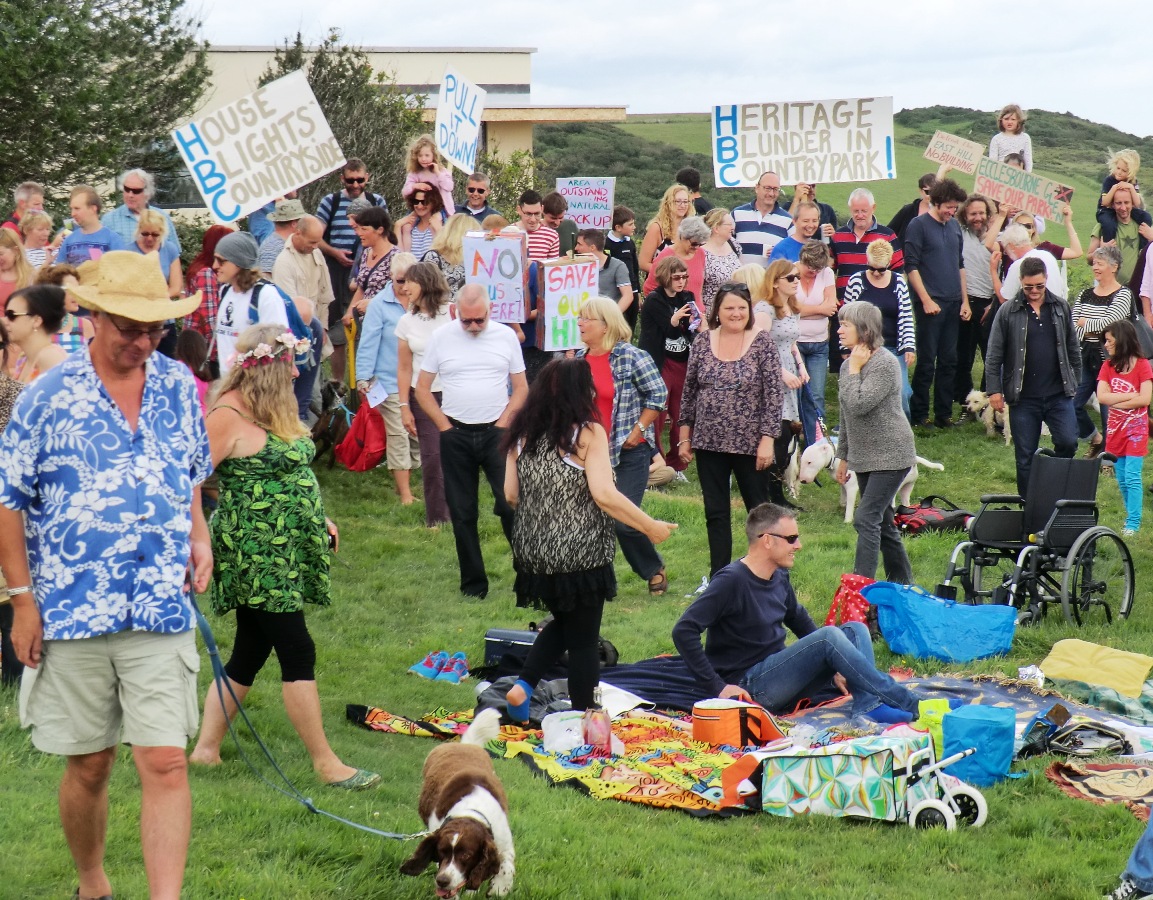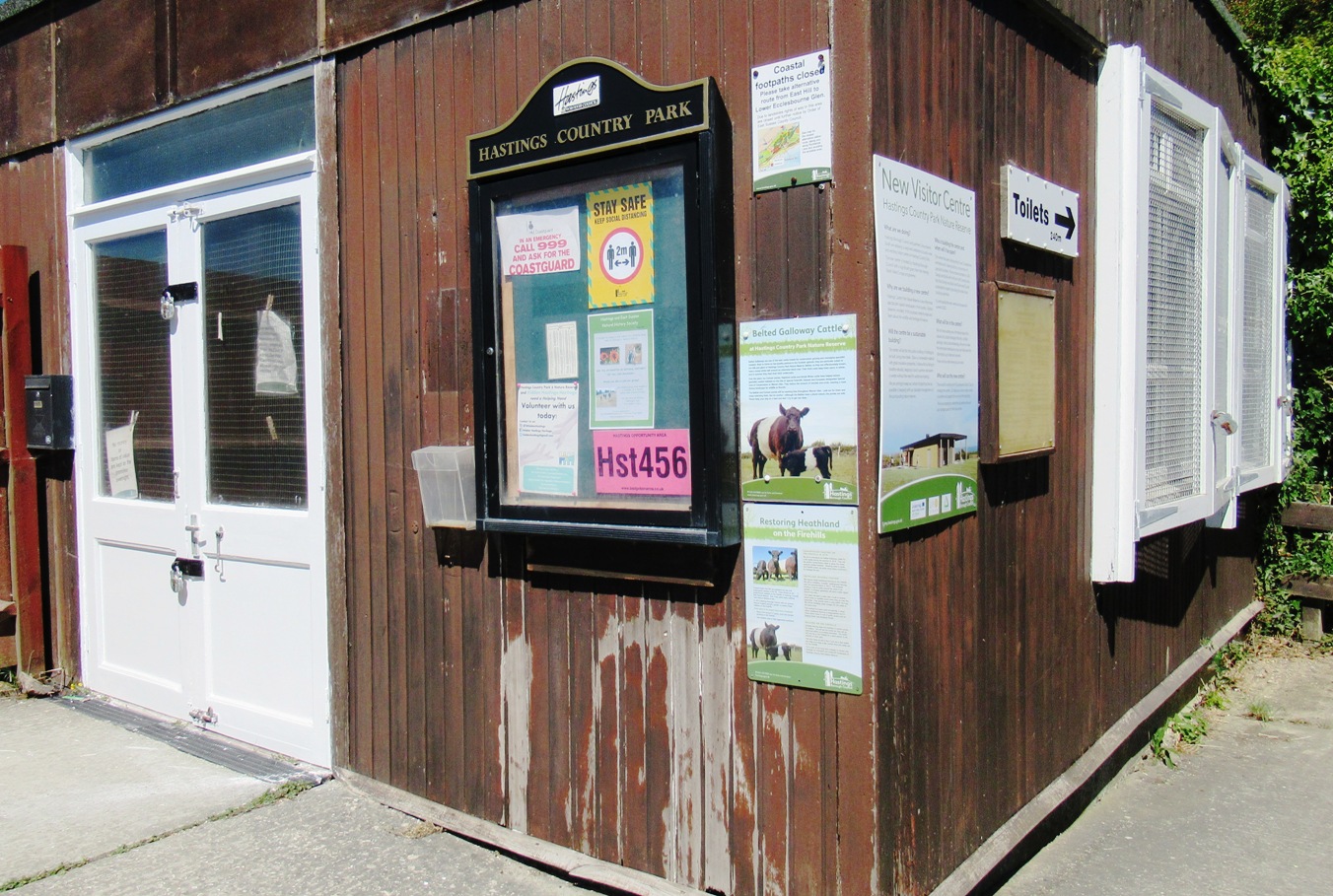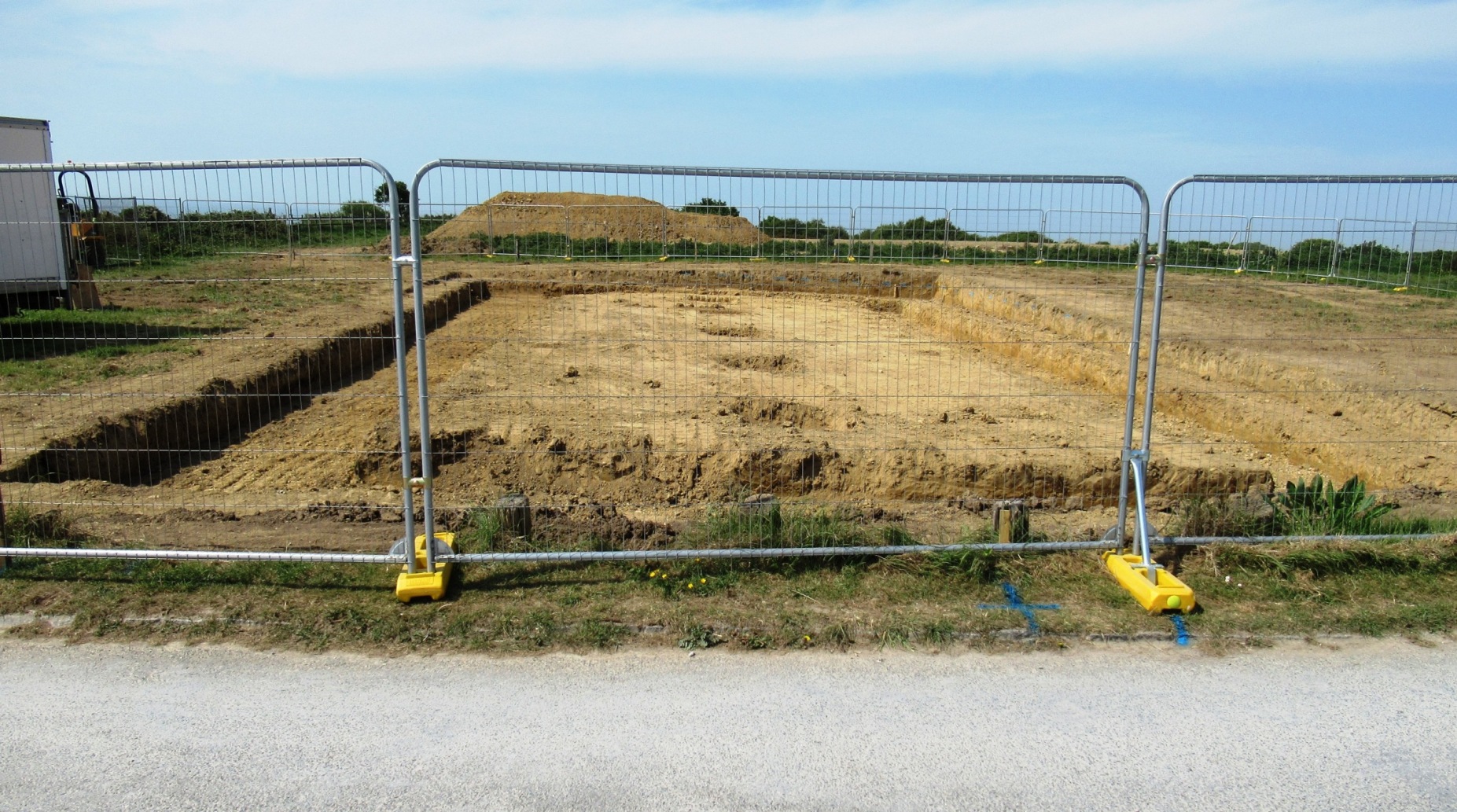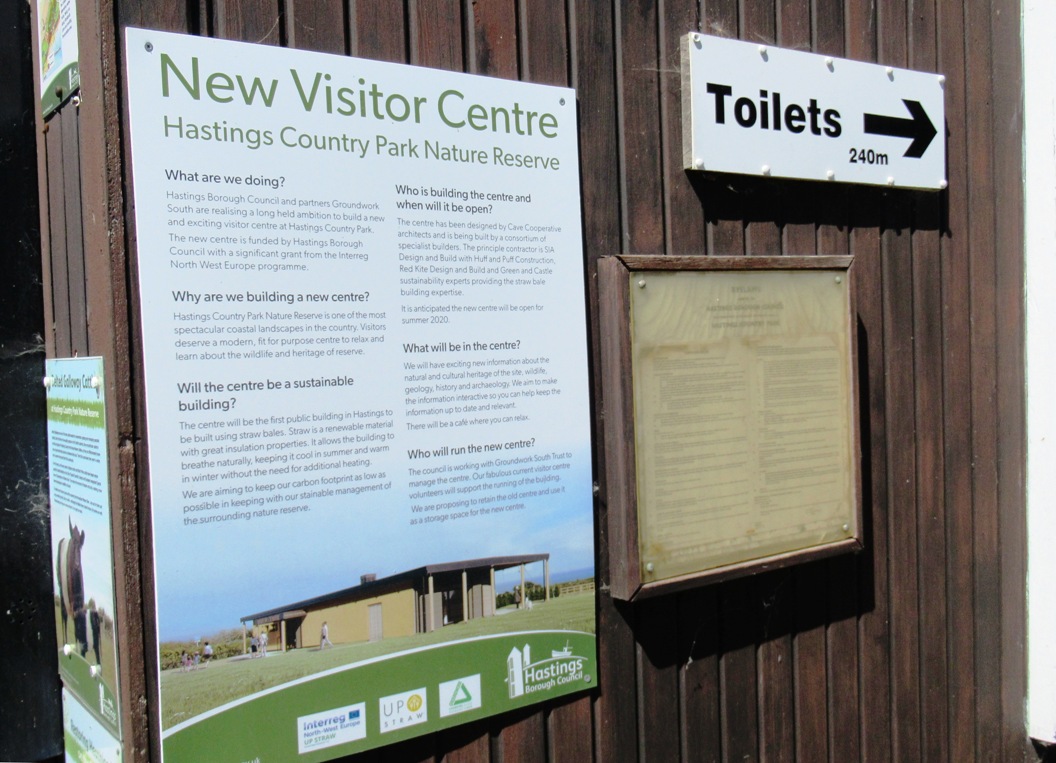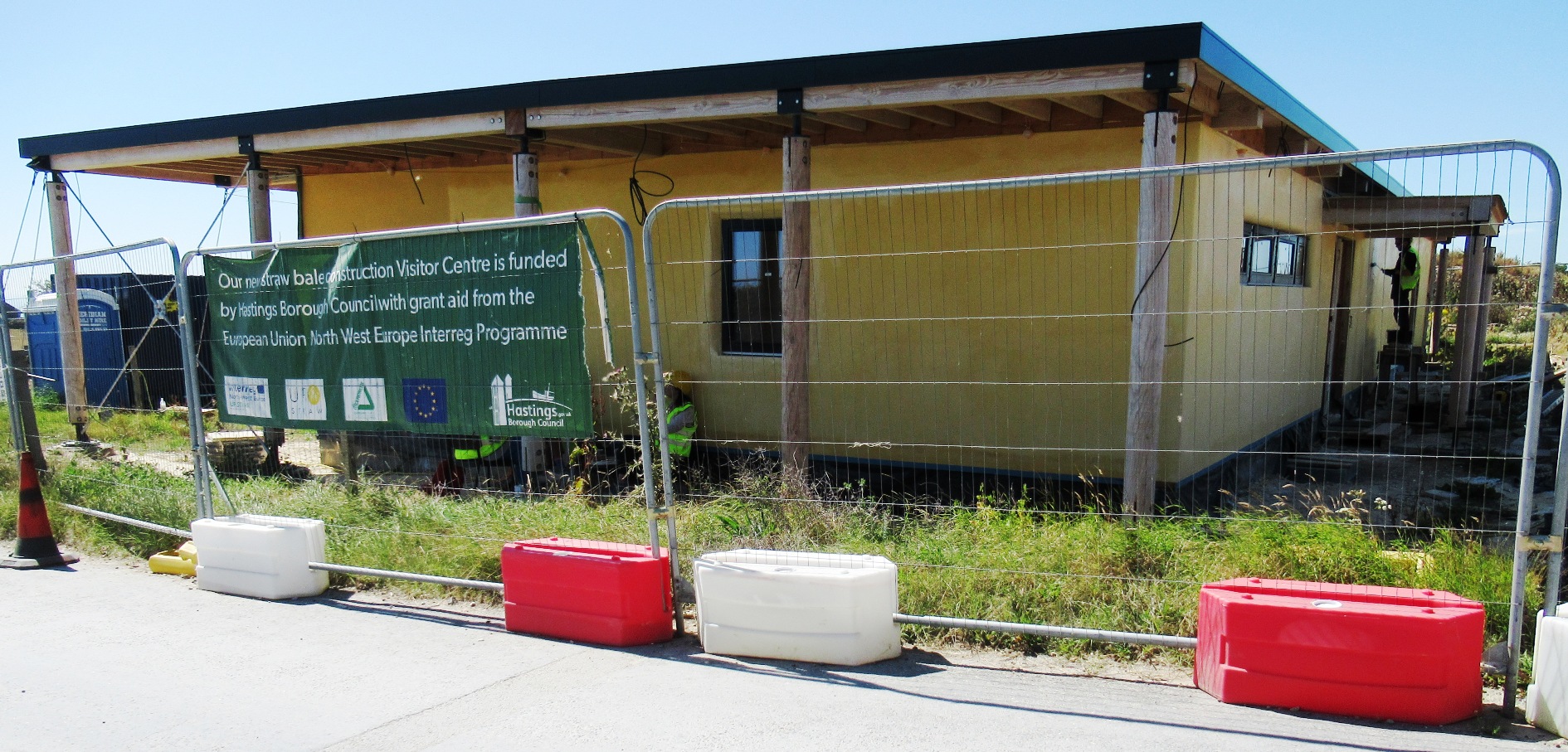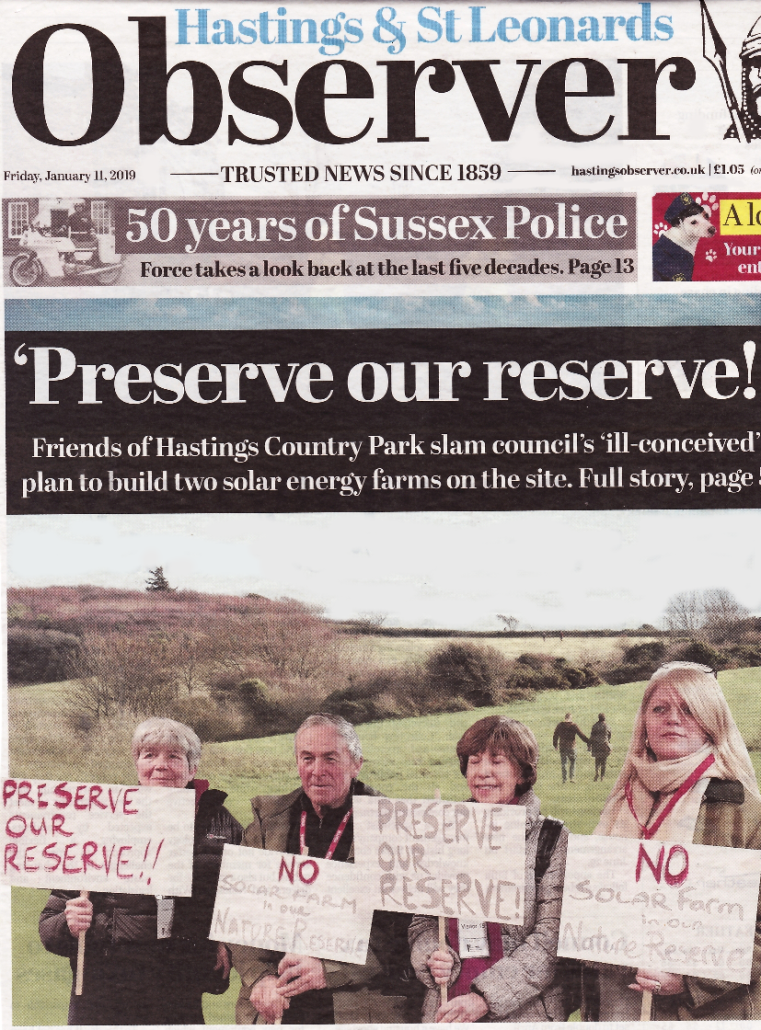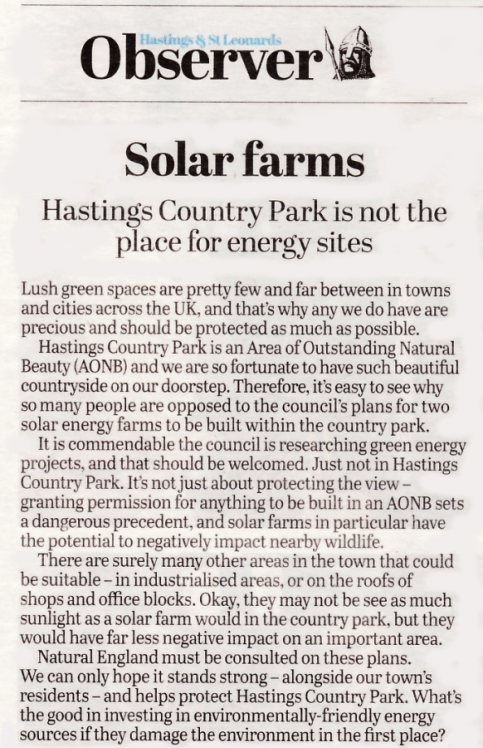2000 Onwards
2001 Oct - Richard Ashworth, the tenant farmer at Fairlight Place Farm, departed after legal action was threatened over the pollution of the Fairlight Glen SSSI he was repeatedly causing by allowing slurry to run-off from his intensive dairy farming. His negative approach to farming was condemned by many people, but councillors and council officers were reluctant to take action against him because of his prominence in the local establishment. However, when they were threatened with major fines (£20,000 or more) if they did not stop the SSSI pollution, the Council bought out his agricultural tenancy, and thereby took possession of Fairlight Place and the farm buildings. The Hastings Observer reported that Mr Ashworth received £½ million for this settlement, which had a damaging effect on the finances of the farm and the Park, forcing the Council to sell Fairlight Place, the farmhouse and the lodge, and to try to sell the Barn teashop and Warren Cottage. But the auction of Fairlight Place and the farmhouse was not held until mid-December 2003, by which time Fairlight Place had suffered major vandalism because of the Council's failure to look after it, thereby greatly reducing its value. The 2003 buyer was Mr Andrew Blackman, who, with his partner, made a large-scale investment in completely restoring the building and its surrounding gardens, turning the whole setting into a reminder of the Place in its attractive old days. Without Mr Blackman's venture, it is highly unlikely that Fairlight Place would be the great historical asset that it is today.
 Fairlight Place in 2009, after its restoration.
Fairlight Place in 2009, after its restoration.
Mr Ashworth, born in Folkestone in 1947, was a farmer in New Zealand until 1972, when he became one in England. He developed his own large-scale business of processing and retailing dairy products, and from 1990 to 2003 was chairman of United Milk plc. He was chairman of Plumpton College from 1985-2000. Mr Ashworth was an influential member of the local Conservative Party, and was elected as an MEP (Member of the European Parliament) for the south east region in 2004 and 2009.
2002 March - Hastings Council had decided in September 2001 that the Country Park and the Fairlight Place Farm should become a single integrated land unit and that it should be declared a Local Nature Reserve. Agricultural consultants ADAS were appointed in March 2002 to pursue this. Sussex Wildlife Trust emerged as the preferred managers, and a management agreement was discussed with them throughout 2003. But this failed to produce a satisfactory result.
2004 - The Archaeology and History of Hastings Country Park, edited by David Padgham, was published by Hastings Area Archaeological Research Group. This was the first comprehensive overview of the Reserve’s history, examining the story area-by-area, rather than chronologically, as is done here, and is essential reading.
2004 March - The council decided to run the combined Country Park and Fairlight Farm itself. It appointed a reserves officer, established a Management Forum (of five councillors, agency representatives and council officers) and signed a Countryside Stewardship Agreement with the government. The stewardship scheme began in October 2004, receiving a ten-year grant, to be administered by ADAS. The forum met for the first time on 25 November 2004, and over the following months drew up a comprehensive management plan for the implementation of the grant. This plan was endorsed by English Nature in February 2005 and by Hastings Council in July 2005. It covered a five year programme of capital spending to 2010, and a revised plan was drawn up in 2009-10 for 2010-15. 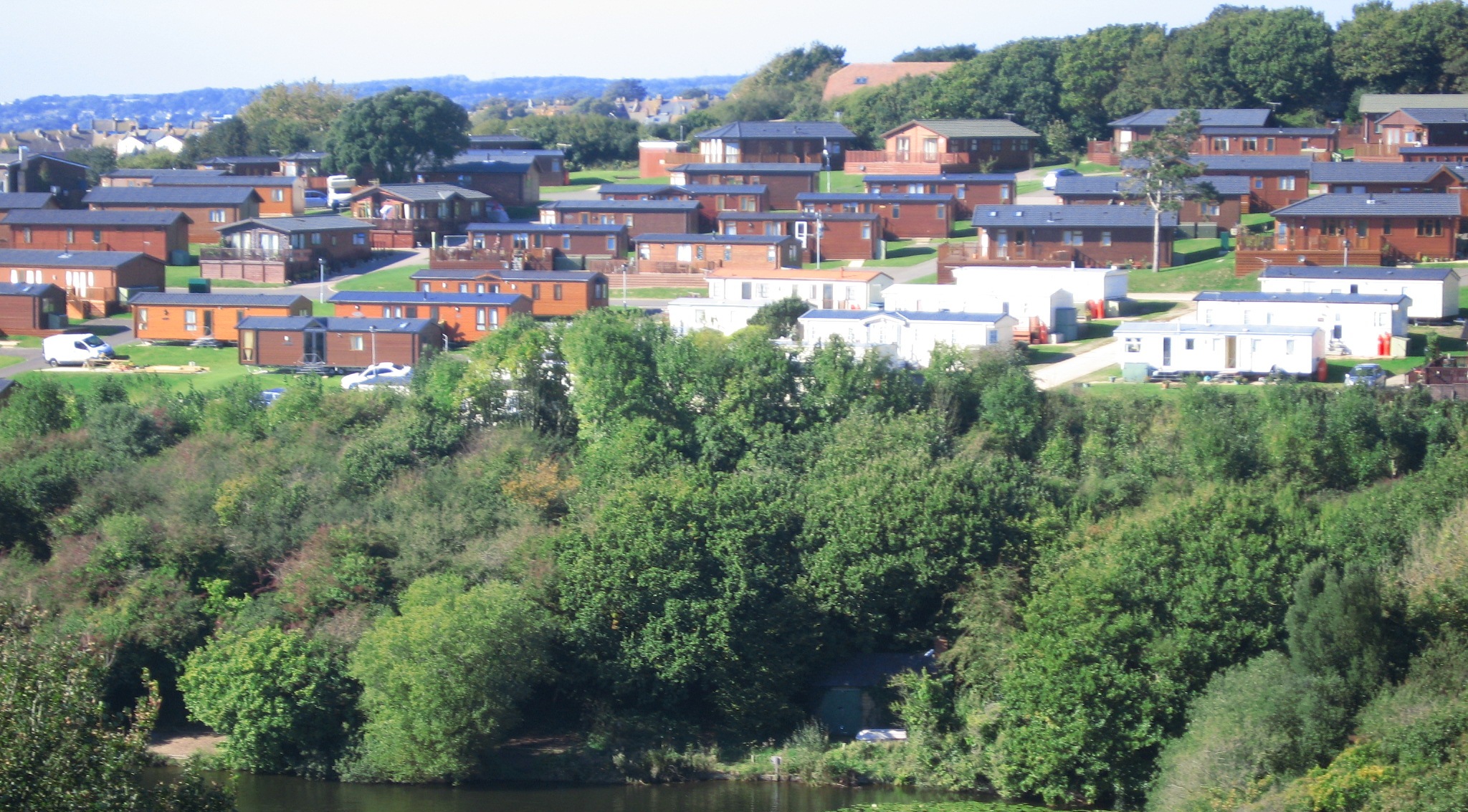 Shear Barn in 2010 - en route from a dairy farm, via some tents in a field, to a housing estate.2004 Nov - Hastings Council refused planning permission for Shear Barn Caravan Park to site 136 static caravans on the touring facilities field on the north-west side of Barley Lane and for 18 timber-clad caravans on the south-east side of the lane. In August 2005, Shear Barn lost their appeal for the 136, but won approval for the 18, which went ahead, turning the area into a form of housing estate. Shear Barn advertising says 'To comply with our holiday park site license, we must ensure that lodges [the timber-clad caravans] are used as holiday homes and for recreational purposes only.'
Shear Barn in 2010 - en route from a dairy farm, via some tents in a field, to a housing estate.2004 Nov - Hastings Council refused planning permission for Shear Barn Caravan Park to site 136 static caravans on the touring facilities field on the north-west side of Barley Lane and for 18 timber-clad caravans on the south-east side of the lane. In August 2005, Shear Barn lost their appeal for the 136, but won approval for the 18, which went ahead, turning the area into a form of housing estate. Shear Barn advertising says 'To comply with our holiday park site license, we must ensure that lodges [the timber-clad caravans] are used as holiday homes and for recreational purposes only.'
2005 May 4 - The small golf shed on the East Hill was demolished, the pitch-and-put golf course having been scrapped.
2006 March 27 - Hastings Council agreed to go ahead with running the Country Park and farm as a ‘local nature reserve’ under the terms of the 1949 National Parks and Access to the Countryside Act. This was achieved in July 2006, creating the Hastings Country Park and Fairlight Place Farm Local Nature Reserve, as it was first known officially. The management was funded by Hastings Council, DEFRA and Natural England, and the scheme was known as the Hastings Country Park Nature Reserve Restoration Project. The Reserve was awarded a Green Flag by the Civic Trust in 2006, 2009 and in many years thereafter.
2006 April-May - Archaeology South-East, part of University College London, conducted a landscape survey of all the Reserve for Hastings Council, to 'inform future management plans and produce information for use in educational and interpretative formats'. The detailed 104-page report, listing all known historic sites, recommended that 'the most important issue [for further fieldwork] relates to the possible promontory fort on the East Hill'. It said that in addition to the 2007 topographical survey there should be a geophysical survey of the hill, with special concentration on the south-western corner, by the lift. This was carried out in December 2011.
2007 March-Oct - English Heritage’s Archaeological Survey Team carried out an analytical earthwork survey of the East Hill, with the aim of helping Hastings Council 'improve future management and appreciation' of the hill. The survey said that archaeological activity spanning at least 4,000 years 'indicates that this headland has been an important locale for local communities over a long period of time'. It concluded that it was quite likely (but still unproved) that the hill was an Iron Age hill fort, and that there may have been a burial mound dating from c2,000 BC near the lift, although this was uncertain. The team came to no conclusion about the role or age of the picnic site, except that it was pre-1750. The team’s report was largely inconclusive because geophysical surveys and excavations were beyond their remit, and would have been expensive.
2007 March 8 - In 1987 the Volunteer Ranger Group had been set up to assist the head ranger Geoff Solley by patrolling the Reserve, giving advice to visitors and carrying out conservation work. The initial enthusiasm of these volunteers was gradually worn down by the negative attitude some of the Council’s staff, and on 8 March 2007 a meeting of them agreed that a new group called the Friends of the Hastings Country Park Nature Reserve should be formed. The inaugural meeting of this group took place on Tuesday 17 April 2007 at the Horntye Sports Complex. Its aims are to help provide information, guidance and education and to assist with the management of the reserve, for the benefit of wildlife and people; and to promote, protect, conserve and enhance the natural environment of the reserve for future generations, and encourage others to join in this work. I (Steve Peak) have been on the Friends committee since then, and was chairperson from 2009-2012. Some members of the 1987 Volunteer Ranger Group formed the Hastings Country Park Nature Reserve Conservation Group which for some years carried out regular conservation work.
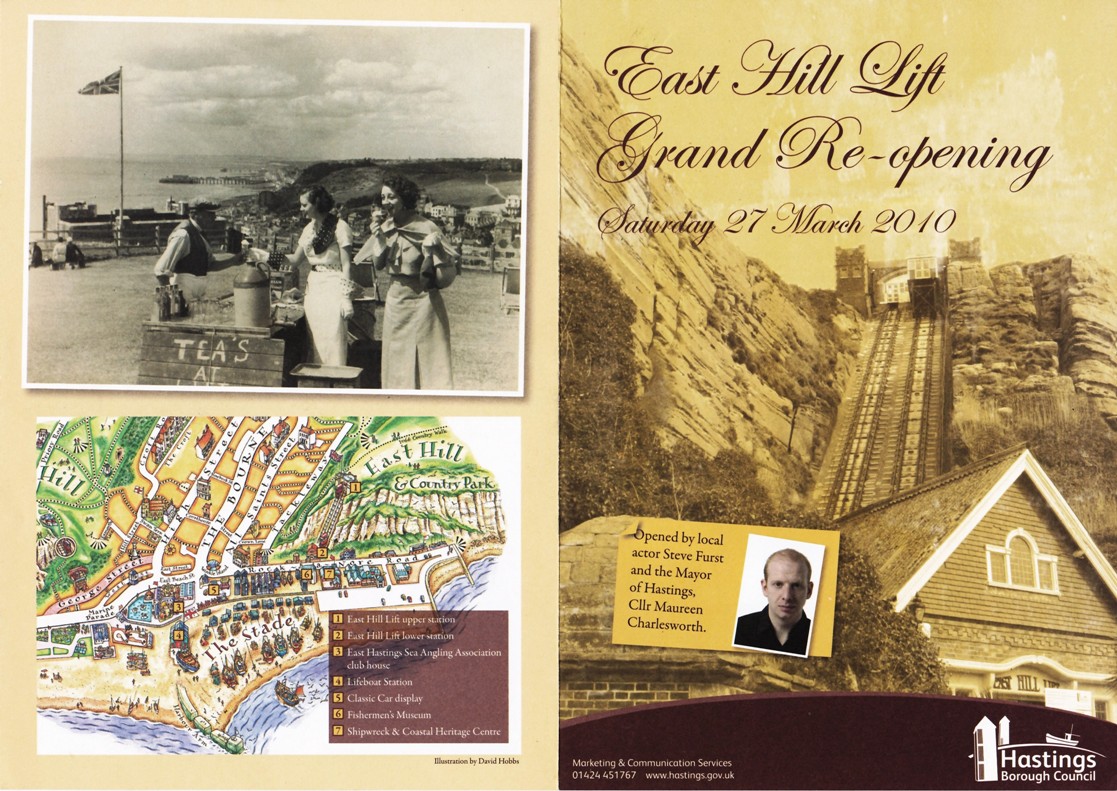 The lift reopens, 27 March 2010.2007 June - The East Hill Lift was closed following a serious accident, when the cars crashed into the upper and lower walls. This was caused by the malfunctioning of the controller unit, which was being replaced as part of a three-year major improvement scheme. The carriages were removed for rebuilding in August 2009, with the lift re-opening on 27 March 2010. The lift had first carried passengers in 1902.
The lift reopens, 27 March 2010.2007 June - The East Hill Lift was closed following a serious accident, when the cars crashed into the upper and lower walls. This was caused by the malfunctioning of the controller unit, which was being replaced as part of a three-year major improvement scheme. The carriages were removed for rebuilding in August 2009, with the lift re-opening on 27 March 2010. The lift had first carried passengers in 1902.
2011 Dec 4-6 - The geophysical survey of part of the west end of the East Hill, recommended in 2006, was carried out by Dr Michael Fradley, with funding from the Sussex Archaeological Society. Unfortunately it only examined the football pitch and nearby land, and its conclusion was that the survey results were 'ambiguous'. Nothing of any significance was found.
2013 Dec 10 - Respected local historian David Padgham summarised the latest knowledge about the well-known picnic site on top of the East Hill often called 'St George's Churchyard'. He said there was no actual evidence for the former existence of a church or Christian burial ground there. A survey in 1965 by Museum curator John Manwaring Baines found sandstone bedrock at depths of between one and two feet, so the topsoil is very shallow, making burials impossible. The only finds were a few insignificant pieces of pottery. Baines investigated the surrounding earthwork and found nothing to suggest that it was ancient. The enclosure belonged historically to All Saints Church, and in about 1840 was let out as allotments, and remained so until the 1960s. When first cultivated an urn containing about 30 brass Roman coins was found. The hill was known as 'St George's Lands' in several legal documents from 1540 onward, and the first use of the present name 'East Hill' appears ot be in 1792. From about 1400 the hill was administered by the Manor of Brede, where the parish church is St George's, so Mr Padgham thought the best explanation of the local name for the hill is that tenants now having to pay their dues to Brede came to associate it with the church there.
2013 - In the winter of 2013-14 two severe landslides in Ecclesbourne Glen started a series of problems with Rocklands Caravan Park. A large amount of ground slipped down into the glen from below the south side of Rocklands, making two key paths through the glen unusable. Then in early 2014 Rocklands began replacing a small ‘holiday let’ house which was in a prominent position overlooking the glen with a larger and much more conspicuous ‘holiday let’. The building was larger than specified in its February 2013 planning permission from Hastings Council. This prominent construction and the permanently damaging mud slide in the glen together attracted widespread public anger with Rocklands, made worse when the Council gave retrospective planning permission.
The Save Ecclesbourne Glen (SEG) was formed. They believed the mud slides had been caused by heavy rain draining off a new road and car park constructed by Rocklands close to its south boundary. Plus there had been terracing, many trees had been felled, much hedging had been removed and eight extra caravans had been installed without planning permission. In following months SEG condemned the Labour-run Hastings Council for letting the many changes take place, and for doing little to reflect the views of the public. In April 2014 the many complaints prompted the Council into commissioning an independent geophysical survey by Coffey Geotechnics into the cause of the landslides. SEG complaints to the Local Government Ombudsman about the way the Council handled the Rocklands planning applications was upheld in December 2016. At the same time SEG said that the Council had spent at least £92,000 handling the whole Rocklands issue. The Council refused to publish the Coffey report into the landslips, but at a hearing of the Information Rights Tribunal in November 2017 was ordered to do so. However, on appeal in March 2018 the Council was given permission to keep the report secret, because it contained material that was ‘commercially sensitive’.
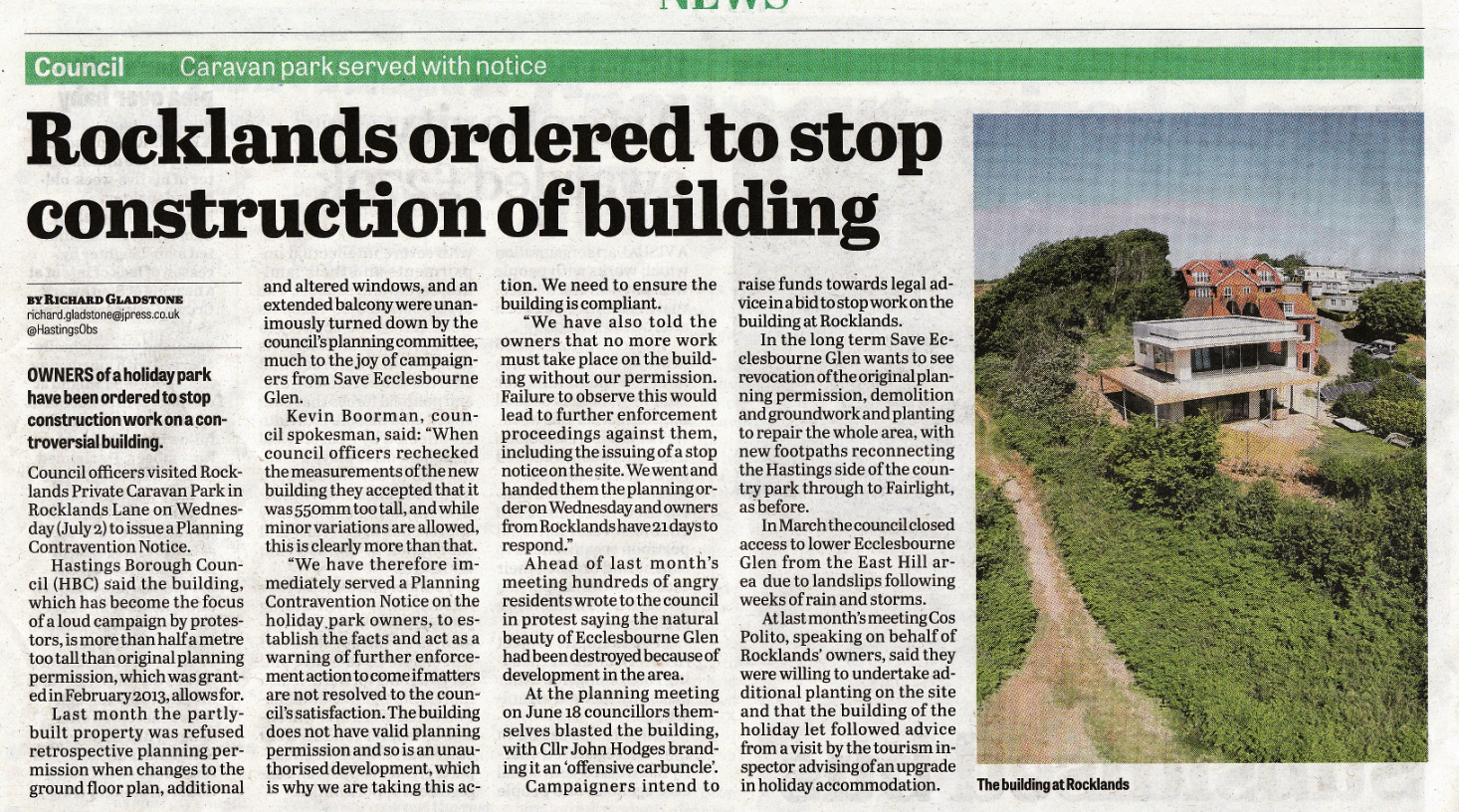 A short-lived victory for the campaigners, July 2014.2014 - The first detailed history of Fairlight was published. The 382-page Fairlight - A Sussex Village by the Sea, containing many pictures and maps, was written and produced by Haydon Luke, a resident of Fairlight.
A short-lived victory for the campaigners, July 2014.2014 - The first detailed history of Fairlight was published. The 382-page Fairlight - A Sussex Village by the Sea, containing many pictures and maps, was written and produced by Haydon Luke, a resident of Fairlight.
2014 Spring - Warren Cottage, until then the Reserve’s day-to-day headquarters, was sold for £250,000 and Hastings Council decided to use the proceeds to replace the old Fairlight Visitor Centre with the ‘Hastings Country Park Interpretive Centre’ (not ‘Visitor Centre’)
five times the size of the existing building. The project partner was Groundworks South, who, the Council’s Cabinet meeting on 6 October 2014 was told, would manage the Interpretive Centre for ten years. The initial cost was estimated at £400,000 in the Council’s 2015/16 Budget Report. The Council gave themselves planning permission in March 2015, with completion scheduled for the spring of 2016. However, the work was delayed and the costs escalated, although significant EU funding was available because much of the building was to be made with straw bales. But by April 2018 the construction budget had risen to £771,000, and the work was far from complete because of the technical problems and inadequate management by the Council. In January 2021 Conservative councillors claimed that the still-unfinished 2,422 sq ft centre was going to cost £1.1 million, at £458 per sq ft, compared with £257 a square foot to build on Manhattan Island. In addition, Groundworks had said they could not guarantee to honour their 10-year commitment to run the centre, the basis of the project, so the Council had to plan to spend £40,000 annually on ‘operating costs’ till March 2024.
2019 Jan - Hastings Council decided to carry out a feasibility study for installing 10 acres of industrial scale solar arrays in the Reserve, in the fields immediately to the south of Fairlight Place and the farm buildings. After much opposition from the Friends of the Country Park, the proposal was dropped in 2020. This was seen as yet another failure by the Labour-run Council to understand the value and significance of the Reserve.
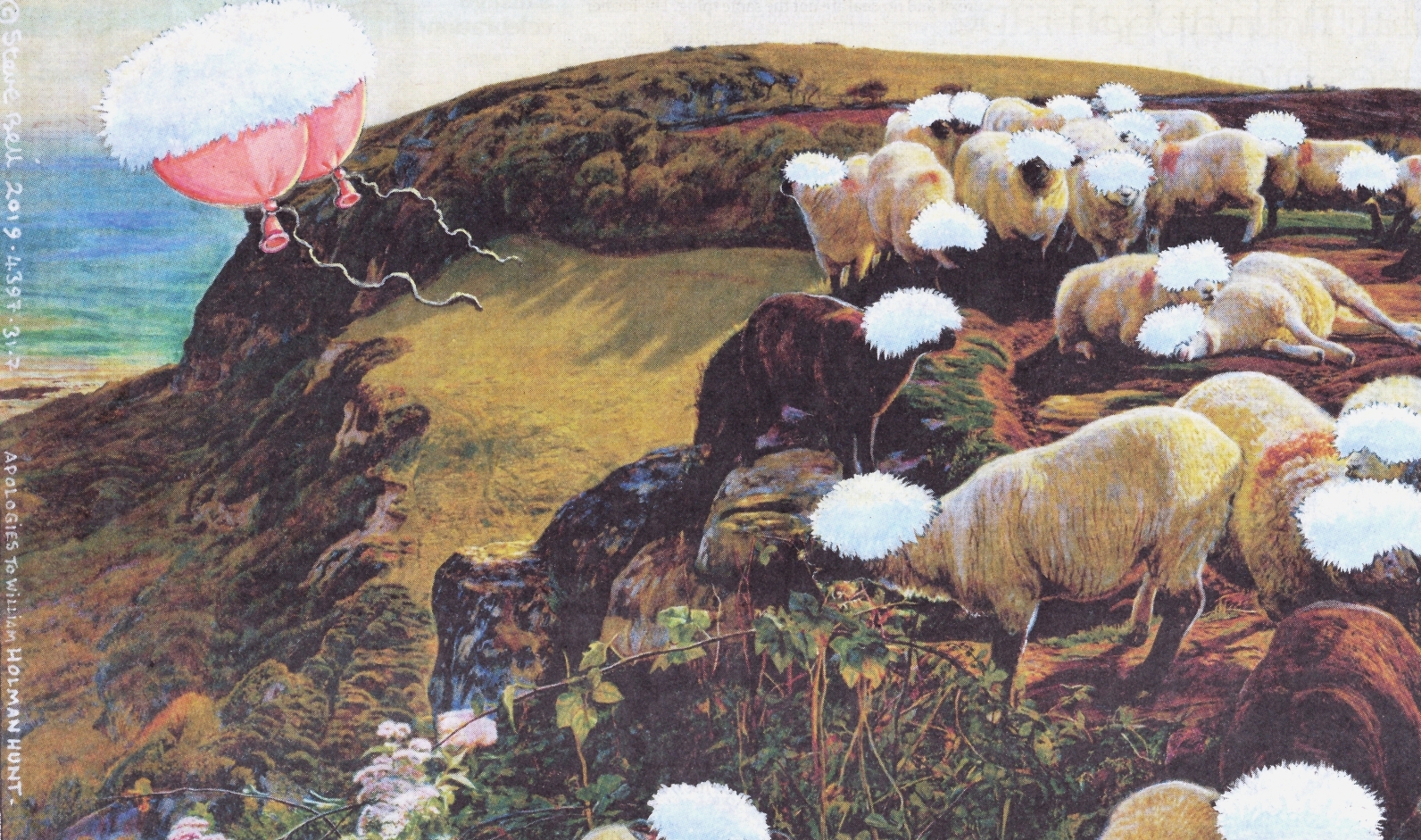 Boris Johnson, one of the sheep on Lovers Seat since 1852, becomes the prime minister and takes off for a better life on 24 July 2019. A cartoon by Steve Bell in the Guardian a week later, with apologies to William Holman Hunt.
Boris Johnson, one of the sheep on Lovers Seat since 1852, becomes the prime minister and takes off for a better life on 24 July 2019. A cartoon by Steve Bell in the Guardian a week later, with apologies to William Holman Hunt.
